TechRadar Verdict
Lenovo’s latest 27-inch 1440p productivity panel packs IPS tech and USB-C connectivity at a great price, but image quality is merely OK
Pros
- +
Great feature set
- +
Slick design
- +
Attractive price
Cons
- -
Not very bright
- -
Limited color coverage
- -
Tilt-only stand
Why you can trust TechRadar
Wondering what you really need from a 27-inch productivity panel? The answer might well be the new Lenovo Q27H-10. It’s a 27-inch monitor with an IPS panel that combines native 1440p resolution with USB-C connectivity, complete with charging, for a remarkably low price around the $250 / £250 mark. Throw in slick, slim-bezel design and the reassurance of the premium Lenovo brand and you have a very appealing proposition.
Overall: 4
Design: 4.5
Features: 4.5
Performance: 3.5
Usability: 4
Value: 5
At that price point there are of course limitations. This monitor is neither aimed at content creation professionals who need wide color coverage, nor is it pretending to be anything other than a conventional SDR panel, rather than offering HDR action.
But for the money the combination of an IPS panel, reasonable 1440p resolution and the cable management bliss that is USB-C connectivity is one heck of a package for non-content creation productivity.

Price and availability
At $259 in the US and £249 in the UK, the new Lenovo Q27H-10 is conspicuous value for money. Of course, at this pricing level a 27-inch 1440p IPS panel isn’t remarkable. Shop around and you can just about get a 4K IPS monitor for similar cash. What you will struggle to find, however, is a comparable monitor with full USB-C functionality from a big brand for a similar price. It’s really appealing.
Design and features
The Lenovo Q27H-10’s ergonomically restrictive tilt-only stand gives an immediate impression of style over substance. And this is a good looking display. In fact, with its symmetrical slim bezels on all four sides of the panel, it has the sort of style you’d normally associate with a premium tablet.
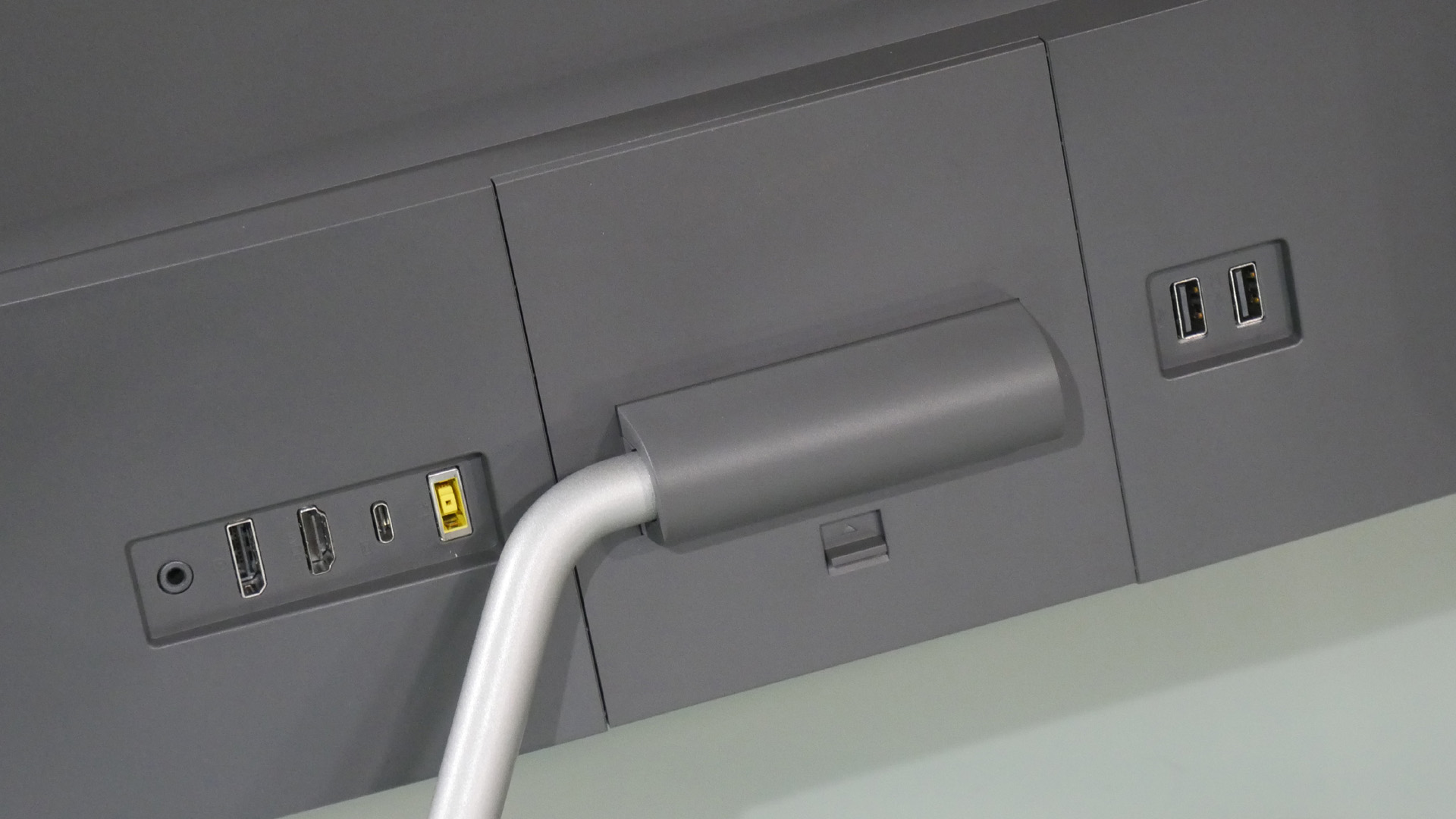
However, there’s real substance here, too, even if that stand limits your installation options. Along with the fact that it looks and feels like a much more expensive monitor than the pricing implies, the Lenovo Q27H-10 has a solid, sensible and high quality feature set, albeit with some limitations.
At its heart is a 27-inch IPS panel with a native 2,560 by 1,440 pixel resolution, otherwise known as 1440p. This is a resolutely SDR panel with no claims of HDR capabilities. However it is rated at 350cd/m2 for brightness and offers claimed 4ms pixel response.
Sign up to the TechRadar Pro newsletter to get all the top news, opinion, features and guidance your business needs to succeed!
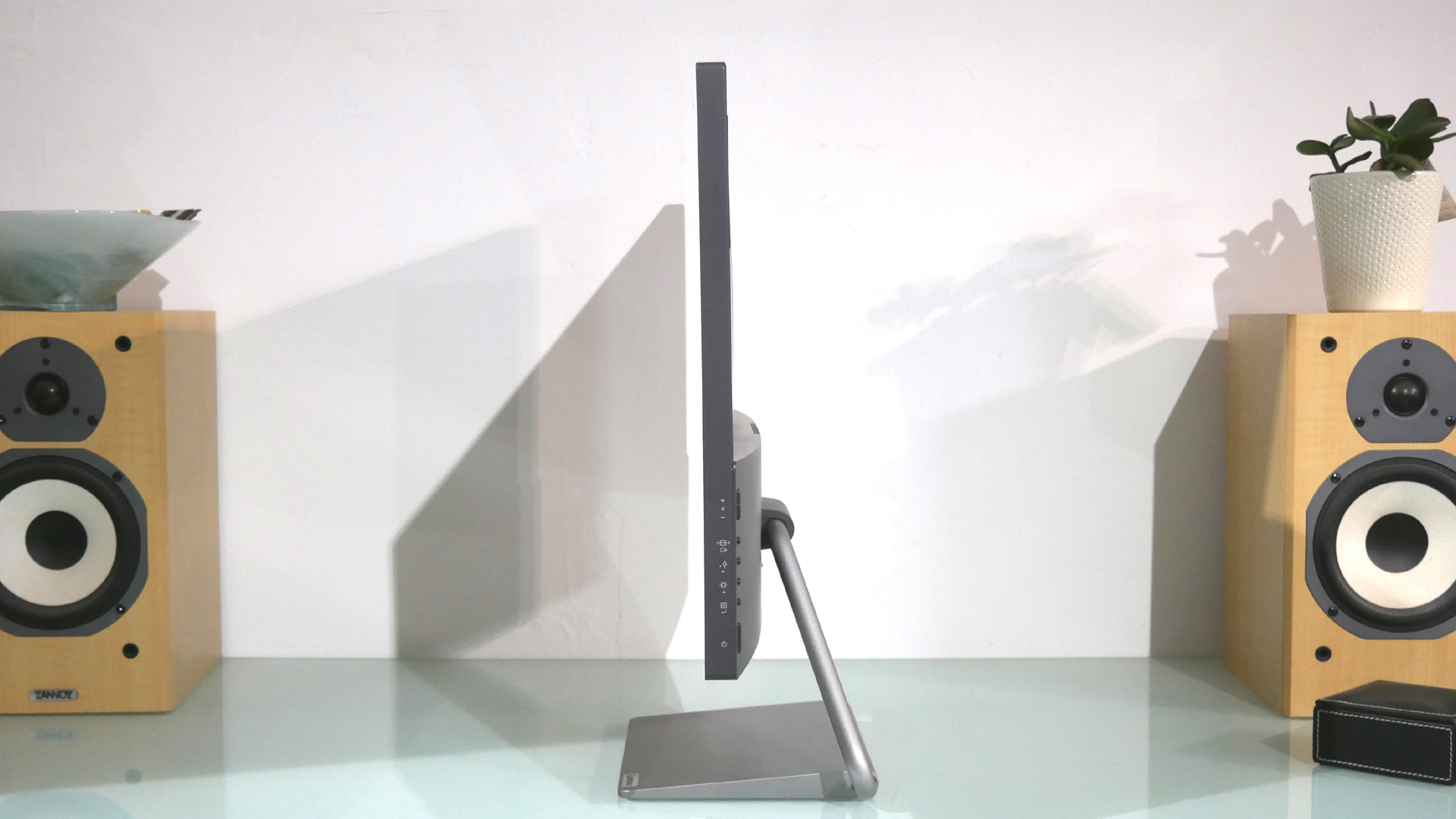
If a lack of HDR support is neither surprising nor really a practical shortcoming, the Lenovo Q27H-10’s color coverage is a little more disappointing. Lenovo doesn’t quote coverage of either Adobe RGB or DCI-P3. But the 99 percent support for the sRGB space implies limited color fidelity.
Of course, at this price point it would be unreasonable to demand wide gamut capabilities. But for those hoping for a content creation panel on the cheap, this probably isn’t it.
Panel type: IPS
Resolution: 2,560 x 1,440
Brightness: 350cd/m2
Contrast: 1000:1
Pixel response: 4ms
Color coverage: 99% sRGB
Refresh rate: 60Hz
Vesa: 100mm x 100mm
Inputs: DisplayPort 1.2, HDMI 1.4, USB C with 65W charging
More of an unambiguous win is this monitor’s connectivity. Along with the usual HDMI and Displayport connections, Lenovo has included USB-C with 65 watts of device charging. As ever, this means you can hook up with a single cable and both drive this display and charge your laptop.
Lenovo has also included a pair of traditional USB-A sockets, so peripherals like a mouse or external hard drive can be attached to the display and forwarded on to the laptop via that same single cable. From an ease of use and cable management perspective, it’s bliss. Simply plug a single cable into your laptop and you’re up and running with charging, peripherals, the lot. The Q27H-10 also has a pair of integrated stereo speakers, which again can be driven via the USB-C interface for simplicity.
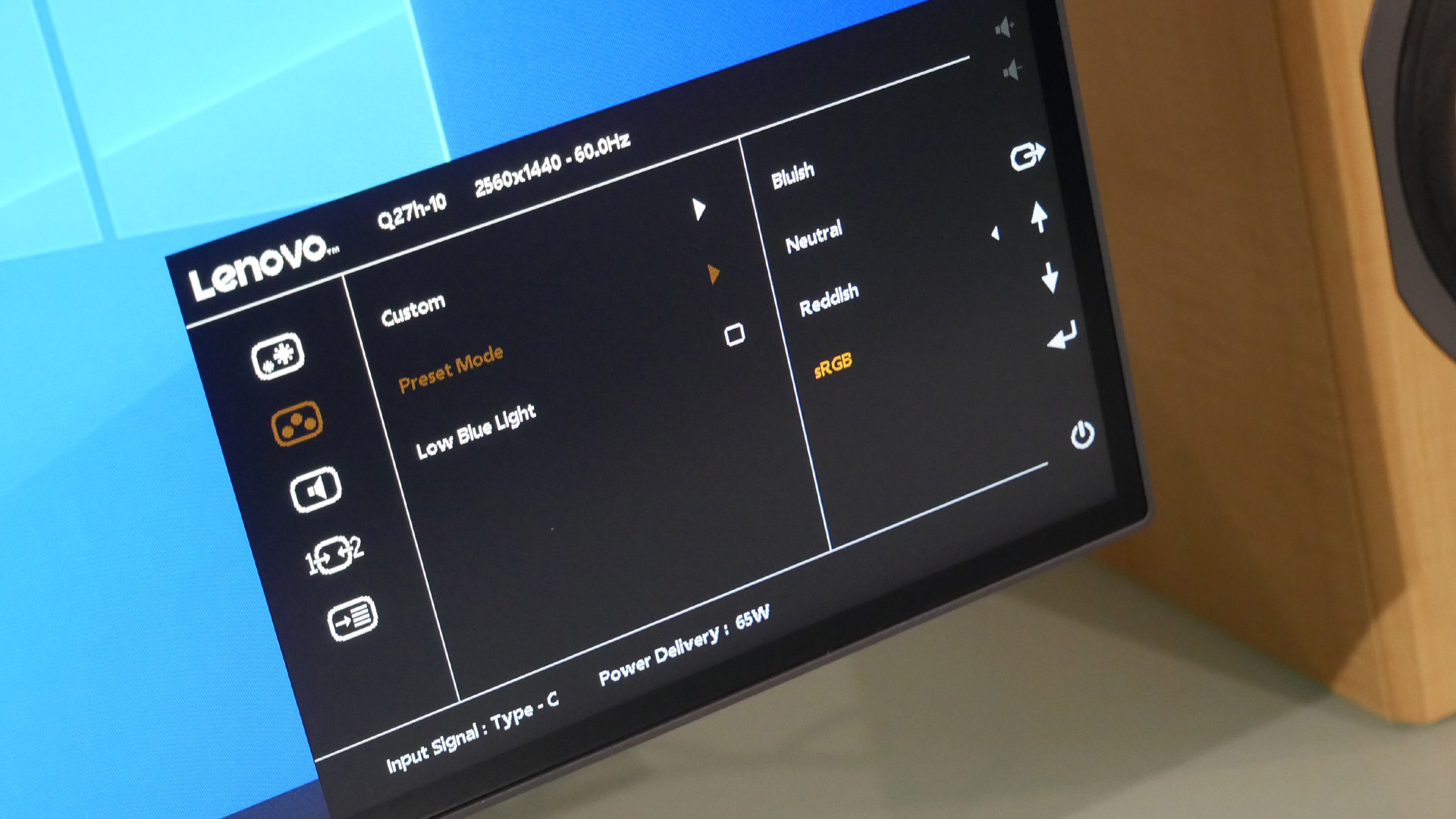
Performance
This is a conventional SDR display. For anyone with experience of a true HDR panel, then, expectations need to be kept in check. There’s a single backlight, no local dimming and likewise no claims of wide gamut performance. Still, an IPS panel and 350cd/m2 bodds reasonably well for general punch and vibrancy.
Unfortunately, the Lenovo Q27H-10 slightly undershoots those relatively modest targets. This is not a terribly bright display. For most working environments, that’s just fine. However, for offices and other locations with lots of excess ambient light, the Q27H-10 struggles to burn through and make a strong impression.
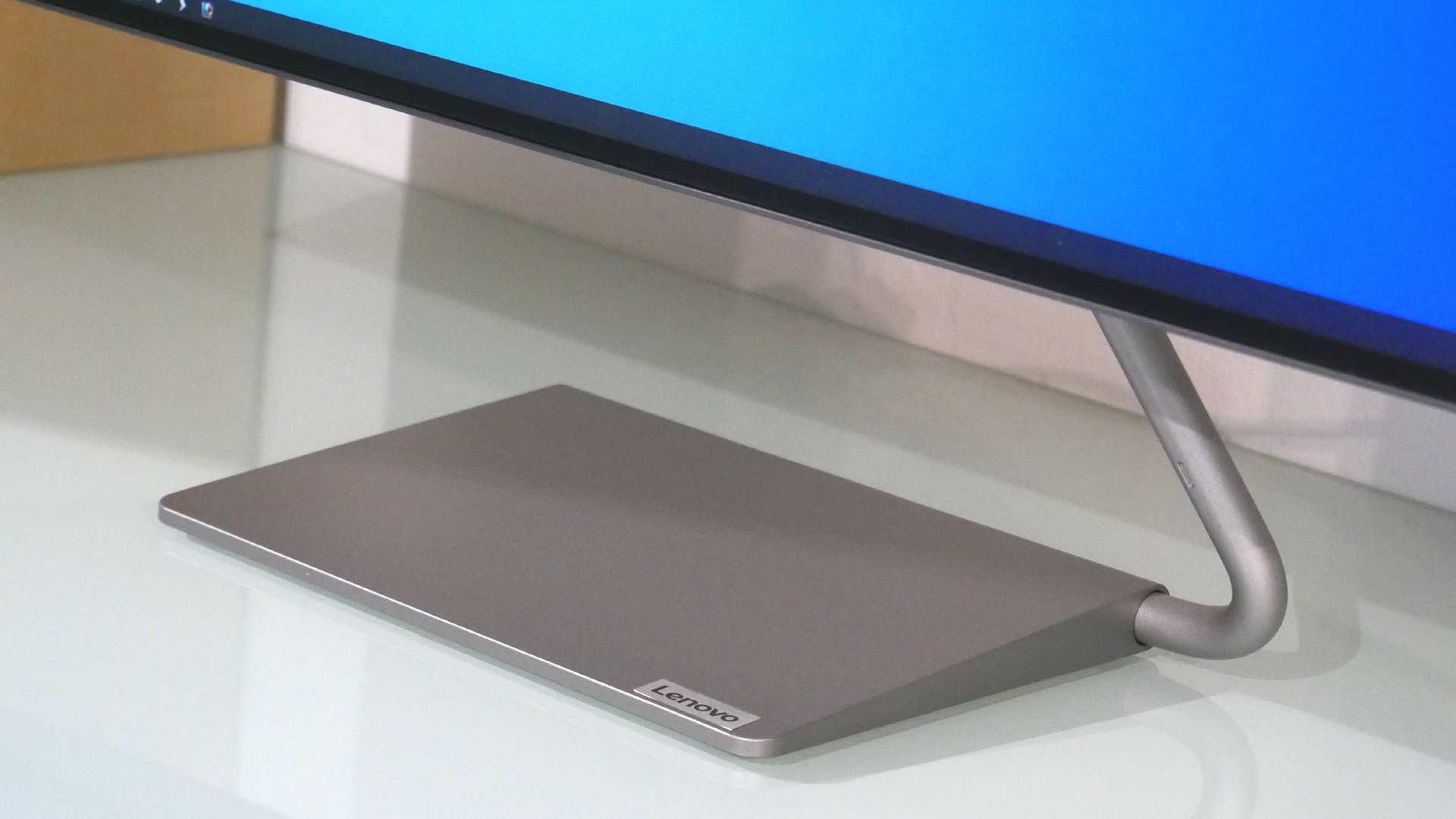
It’s also worth noting that sRGB is the only standardized gamut preset offered by the OSD menu. The likes of Adobe RGB and DCI-P3 are conspicuous by their absence, likely because this monitor falls well short of full coverage of those color spaces.
Still, for the most part this is a pretty well calibrated panel, with natural colors and neutral color temperature. The only obvious exception is a little compression of black tones where some detail is lost.
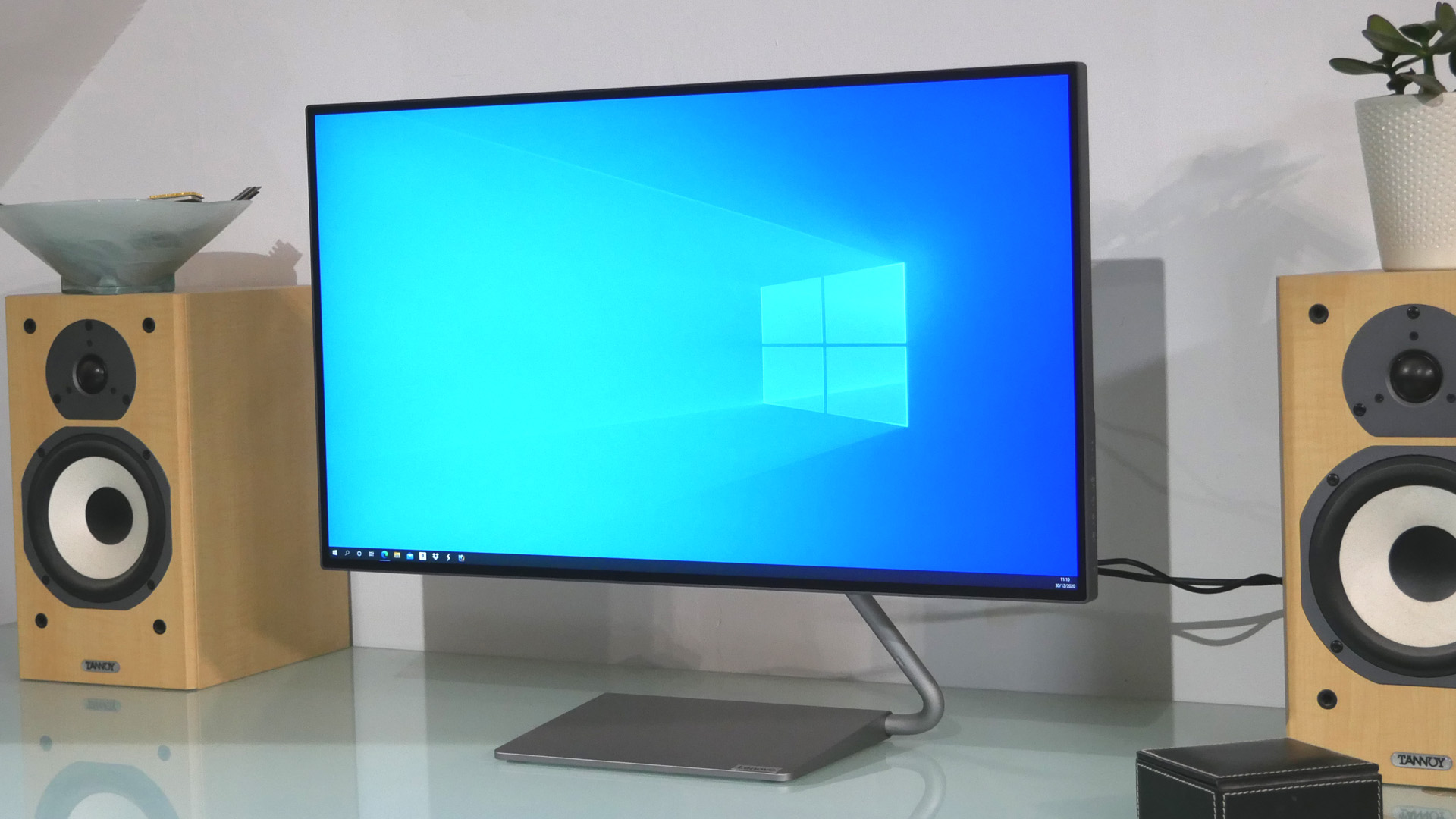
Lenovo has also included user-configurable pixel overdrive. The higher ‘extreme’ setting results in some pretty ugly overshoot and therefore inverse ghosting. But the standard setting delivers reasonable response and no obvious ugliness in terms of overshoot.
Overall, this is a pleasant, if unspectacular example of the IPS panel art, therefore. Viewing angles are excellent, contrast levels are OK and the general impression is of a natural, fairly accurate monitor, but not a terribly vibrant or punchy panel.
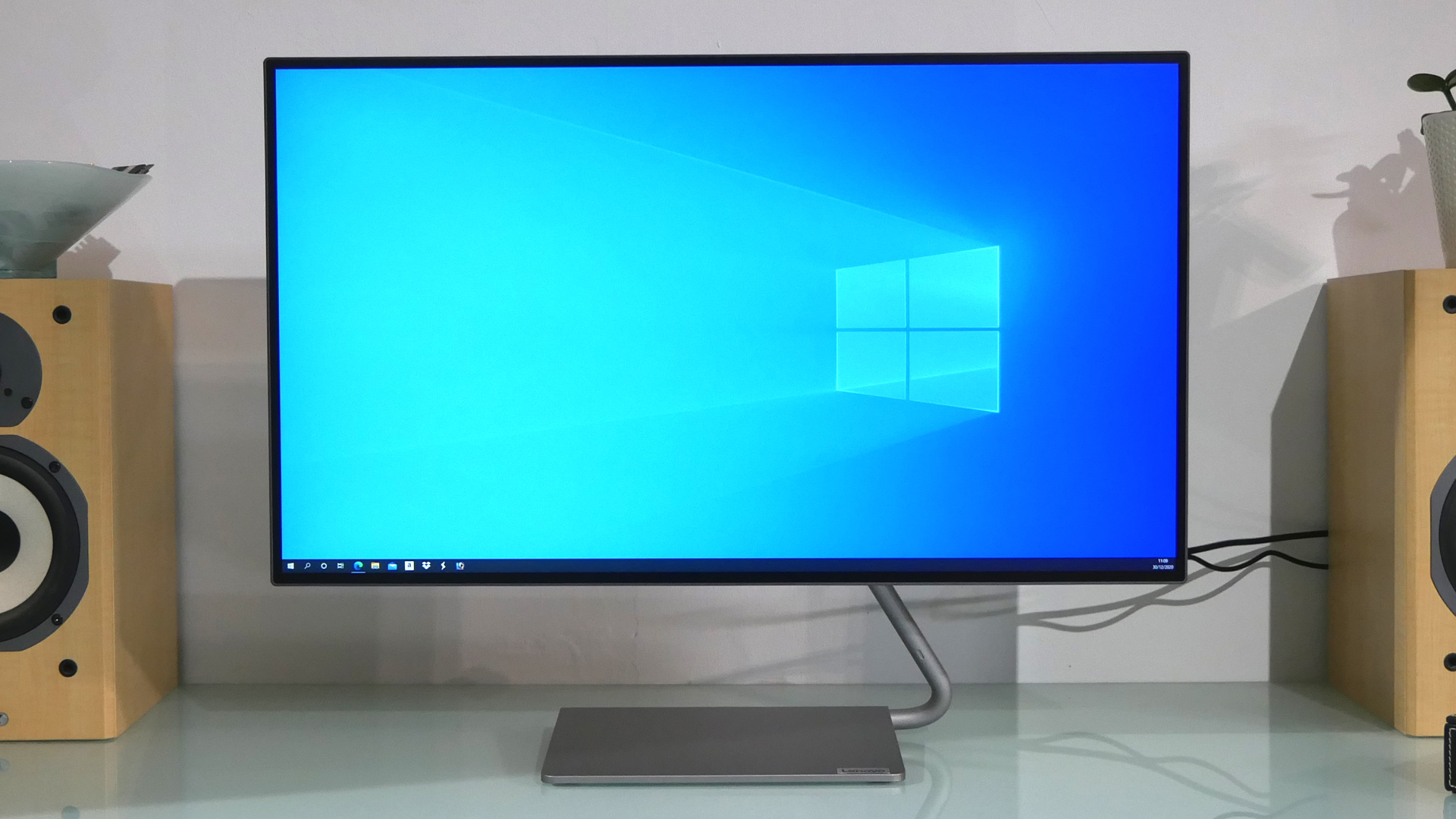
As for the 1440p (2,560 by 1,440 pixels) native resolution, it’s a decent fit for the panel size and certainly the price point. A 4K monitor would give the option of more desktop real estate and the certainty of a tighter, sharper pixel pitch. But there’s still scope here for comfortably viewing two documents or web pages in parallel. After all, it wasn’t that long ago that a 27-inch 1440p monitor made for a premium proposition.
If that’s the visual performance, for the record the performance of the integrated speakers is thin and frankly pitiful. Normally that wouldn’t matter much, but on a display which majors on simplicity thanks to USB-C connectivity, some users might like the idea of using integrated rather than dedicated speakers.

Verdict
Full USB-C functionality remains a painfully pricey feature on most monitors. Happily, the Lenovo Q27H-10 delivers that sweet single-cable experience for less money than we’ve come to expect and, indeed, fear.
It’s also a pretty solid all-round performer thanks to a 27-inch 1440p IPS panel. Sure, it’s an old school SDR panel without any HDR pretensions. Likewise, the Q27H-10’s limited color coverage will rule it out of many, perhaps most, serious content creation workflows.
But if you’re after a competent productivity panel with full USB-C functionality that will look slick in almost any context, the Lenovo Q27H-10 is seriously appealing for the money. If only the stand offered more than tilt adjustment, we could recommend this monitor without any major reservations.
- We've featured the best business monitors.
Technology and cars. Increasingly the twain shall meet. Which is handy, because Jeremy (Twitter) is addicted to both. Long-time tech journalist, former editor of iCar magazine and incumbent car guru for T3 magazine, Jeremy reckons in-car technology is about to go thermonuclear. No, not exploding cars. That would be silly. And dangerous. But rather an explosive period of unprecedented innovation. Enjoy the ride.
